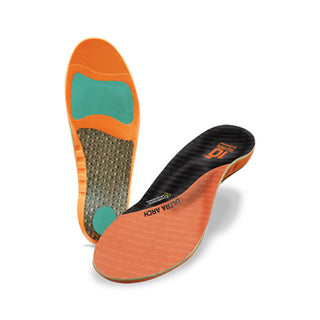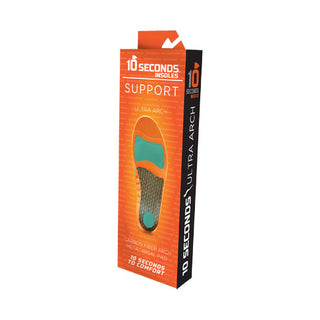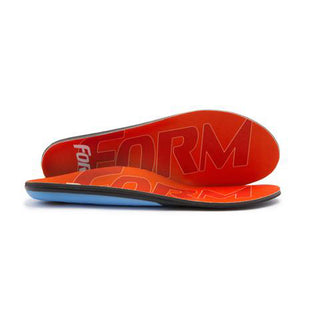Heel Spurs
Recommended for Heel Spurs
View allCalcaneal Spurs or Osteophytes
A Heel spur is a calcium deposit that causes a bony outgrowth on the heel. They can be located at the back of the heel or under the heel (beneath the sole of the foot). Heel spurs are also called calcaneal spurs or osteophytes.
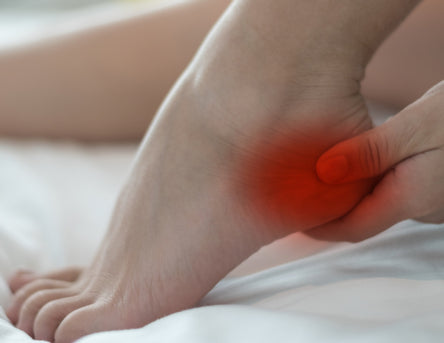
If you are experiencing pain and also have a heel spur, it is possible the pain is not caused by the spur itself but an underlying condition.
Browse our full collection of insoles for heel spurs.
What Are Heel Spurs?
Heel spurs are bony growths that develop on the underside of the heel bone, or calcaneus. They are often associated with plantar fasciitis, a painful inflammation of the fibrous band of connective tissue (plantar fascia) that runs along the bottom of the foot and connects the heel bone to the ball of the foot. Over time, strain on the ligaments and muscles of the foot can lead to the development of heel spurs.
A heel spur itself is not always painful. However, its presence can trigger pain in the surrounding soft tissues, especially when walking or standing for extended periods. The pain is often described as a sharp, stabbing sensation in the heel, which can be more intense in the morning or after periods of rest.
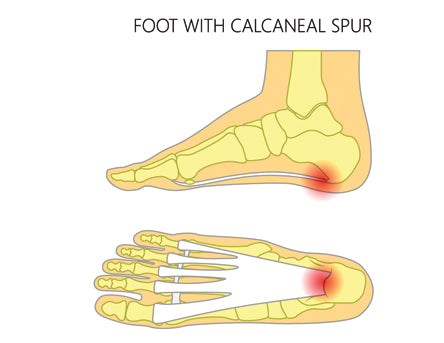
The only way to be certain a heel spur is present is to take an x-ray.
What Causes Heel Spurs?
A heel spur may develop for a number of reasons; most often they accompany a condition called plantar fasciitis, which is inflammation and irritation of the plantar fascia. Additional causes of heel spurs are consistent with the causes of plantar fasciitis as well, there are numerous factors that can contribute to heel spurs:
- Walking gait abnormalities, which place excessive stress on the heel bone, ligaments, and nerves near the heel.
- Running or jogging, especially on hard surfaces.
- Poorly fitted or worn-out shoes.
- Excess weight and obesity.
- Age, as the flexibility of ligaments decreases and the chance of developing a spur increases with age.
It's important to note that not everyone with a heel spur will experience pain, and not everyone with heel pain has a heel spur. Accurate diagnosis is vital, typically involving a physical examination and X-rays.
What Do Heel Spurs Feel Like?
Heel spurs themselves might not always cause pain, but when they do, the symptoms can be quite distinctive. Here's what heel spurs typically feel like:
- Arch Support: Ensures the foot's natural arch is supported, reducing strain.
- Deep Heel Cup: Look for insoles that stabilize the foot and offer cushioning directly under the heel.
- Material: We recommend you look for insoles made from materials like memory foam, gel, or EVA for a blend of firmness and comfort. It is important to make sure they are not too soft and squishy.
- Thickness: Make sure to match the thickness to the available space in your shoes and your comfort preference.
- Shock Absorption: Opt for insoles with gel pads or cushioning in the heel region.
- Durability: Ensure the insoles are made of materials that can withstand regular wear, otherwise they lose their supportive properties over time and effectiveness as a result.
Check out our collection of insoles for heel spurs, we specifically curated these products with the above properties in mind.
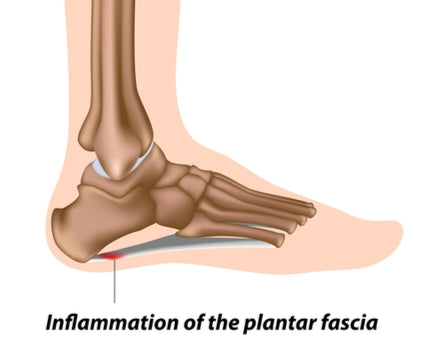
There are many potential causes for heel spurs.
How To Treat Heel Spurs
Due to the similarities between the two, the treatment for heel plantar fasciitis is usually effective for treating heel spurs as well. The treatment usually consists of a combination of stretching, exercise, resting and icing the foot, wearing good quality shoes with insoles, and avoiding going barefoot.
Some cases of heel spurs may benefit from a donut-shaped insert in the shoe. If traditional treatments are not proving effective, physical therapy or a corticosteroid injection may be necessary.
In some severe cases surgery may be needed, though this is a last resort, and often the doctor will not actually remove the heel spur.
A healthy lifestyle can help you to avoid developing this condition. This includes maintaining a healthy weight, stretching before physical activity, and wearing supportive shoes both for day-to-day wear and athletic activities.
What to Look For in Insoles For Heel Spurs
If you decide to shop for insoles to help ease the pain of your heel spurs or help treat them, here are a few factors to consider when browsing:

